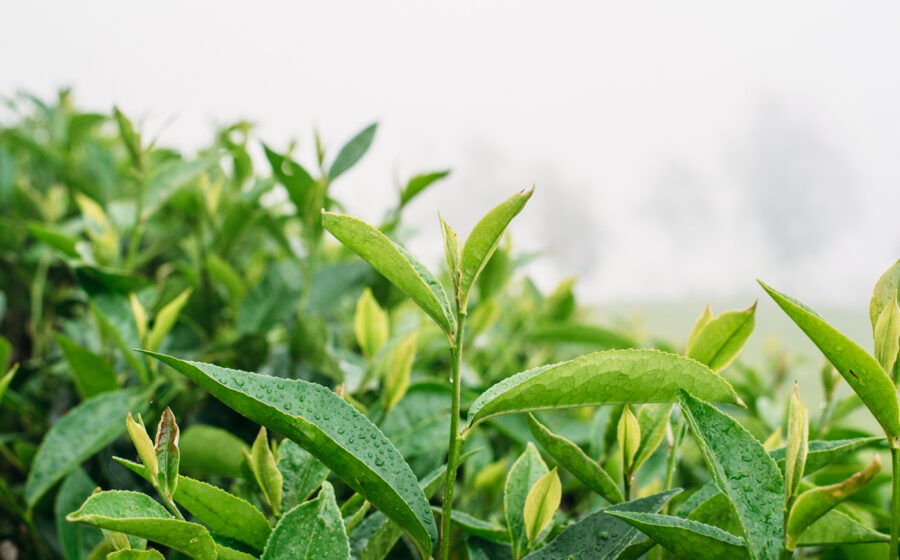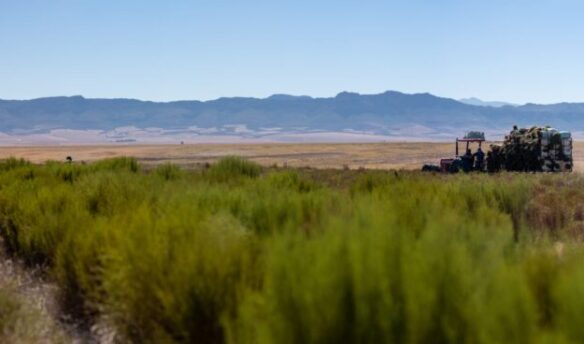For two years in a row, Anshuman Kanoria has seen yields decline at his Goomtee tea estate.
Located in the hill district of Darjeeling in northeastern India, Goomtee is a 500-acre estate that produces about 70,000 kilograms of tea per year. When Goomtee’s previous owner was looking to sell in 2021, Kanoria, a veteran of the Darjeeling tea industry, readily took the plunge. But less than two years later, he was dealing with significant crop losses.
In 2023, Goomtee’s spring harvest was compromised by six months of drought in the preceding winter. This was followed by untimely hail in March and the early onset of monsoons, with unexpectedly heavy rains in April and May. “It ruined our crop and revenue for the peak-quality production period,” Kanoria says.
Such erratic and unpredictable weather patterns have been linked to climate change—and have become increasingly commonplace in Darjeeling, known for producing some of the world’s most exquisite teas. The situation doesn’t bode well for the hill district’s 87 tea gardens, whose clients include large tea importers in Germany, Japan, the U.S., and the U.K.
“Climate change has been a serious disruptor,” says Kanoria, who also heads the Indian Tea Exporters Association. “We are seeing droughts for four to five months in the winter, excessive unseasonal rainfall in April and May, acute heat from April onward, and then there’s always the threat of hail, all of which are affecting crop yields and quality.”
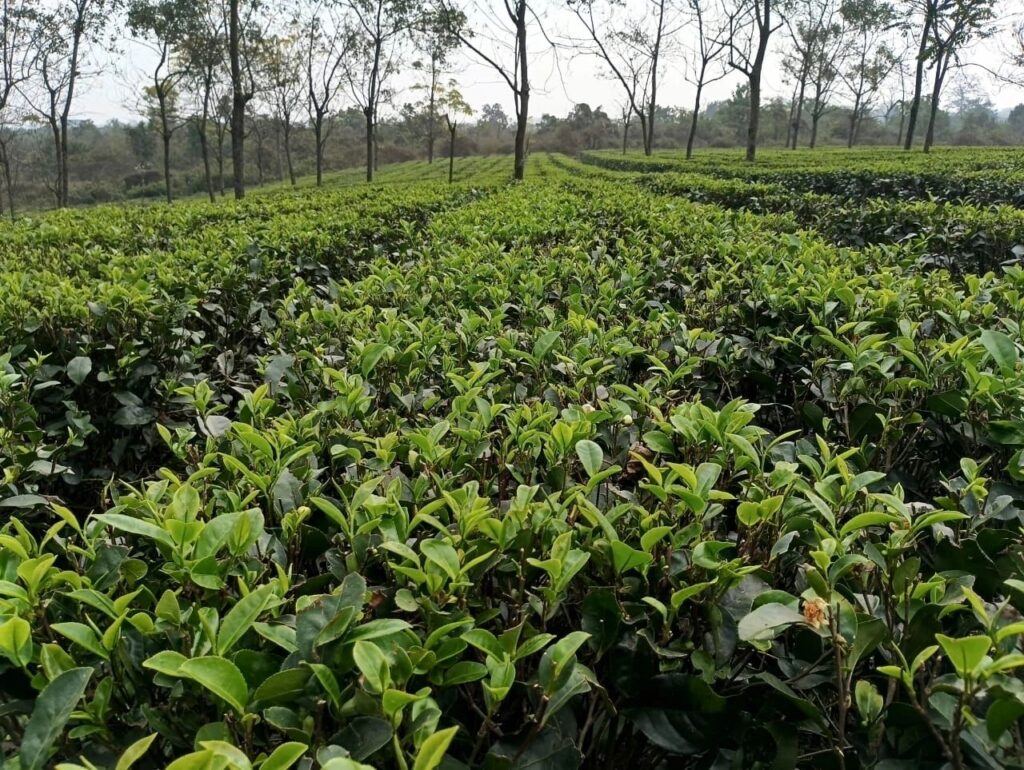
In 2023, Darjeeling tea yields fell to their lowest level in 50 years. The following year, yields plummeted to below 6 million kilograms from more than 8 million a decade prior, while prices declined to a new low.
That’s a big shift for Darjeeling, an area that has proved ideal for tea growing ever since the British established plantations in the mid-1800s with saplings brought—or smuggled—from China. Its altitude of between 600–2,000 meters above sea level; its sloping terrain; and its microclimate of cool summers, chilly winters, and moderate rainfall have all been ideal for producing black tea with a unique aroma and delicate flavor bouquet. As a result, Darjeeling has earned the title of “Champagne of teas” from the world’s tea connoisseurs.
But with weather patterns shifting drastically over the past decade, the distinctive and fabled qualities of this climate-sensitive crop are becoming harder to retain.
Losing Its Fabled Flavors
In Darjeeling, tea is sold not just by the estate, like wines, but also by the harvest season, or flush. The year is divided into four such seasons: first flush, or spring, which extends between mid-February and April; second flush, or summer, between mid-May and mid-June; monsoon flush, between July and September; and autumn flush, between October and November.
First- and second-flush teas are the most prized, and command prices of anywhere between Rs 3,000 to Rs 12,000 ($34–138) per kilogram. Recently, a limited-edition batch sold for a record $5,000 per kilogram in London. According to the Indian Tea Association, first- and second-flush teas account for 40% of estates’ production and nearly 80% of their revenue. And it is these harvests that are bearing the worst brunt of climate change.
First-flush teas are known for their delicate floral aroma and a slight briskness, a term used to describe the astringency of a tea combined with the robustness of its flavor. According to tea consultant Nalin Modha, that brisk quality results from the tea bushes releasing reserve starches into the leaves during the intense bout of growth they experience in spring, after their winter dormancy..
“In the past, light showers between October and March brought relief to the stressed plants during the winter dormancy and helped produce the two-leaves-and-a-bud structure, essential for good-quality tea, once the first flush kicked in,” Modha explains. But when there is no winter rain, bushes go “banji,” growing leaves without the bud that produce flavorless tea.
For the past two years, Darjeeling experienced some of its driest winters, causing most of the first-flush crop to turn banji. “The tea processed from these leaves taste[s] dry and flat, without the distinctive floral notes of the first flush,” says Modha, who has worked with several Darjeeling tea gardens for the past 45 years.
While rising temperatures and the absence of winter showers affect first-flush teas, the second flush is plagued by unpredictable monsoons and unseasonal hail. “Clear sunny mornings followed by light showers at night is the ideal weather profile for the summer harvest,” says Rishi Saria, owner of the Gopaldhara and Rohini tea estates. Increasingly, he is seeing this pattern broken by heavy and erratic rains.
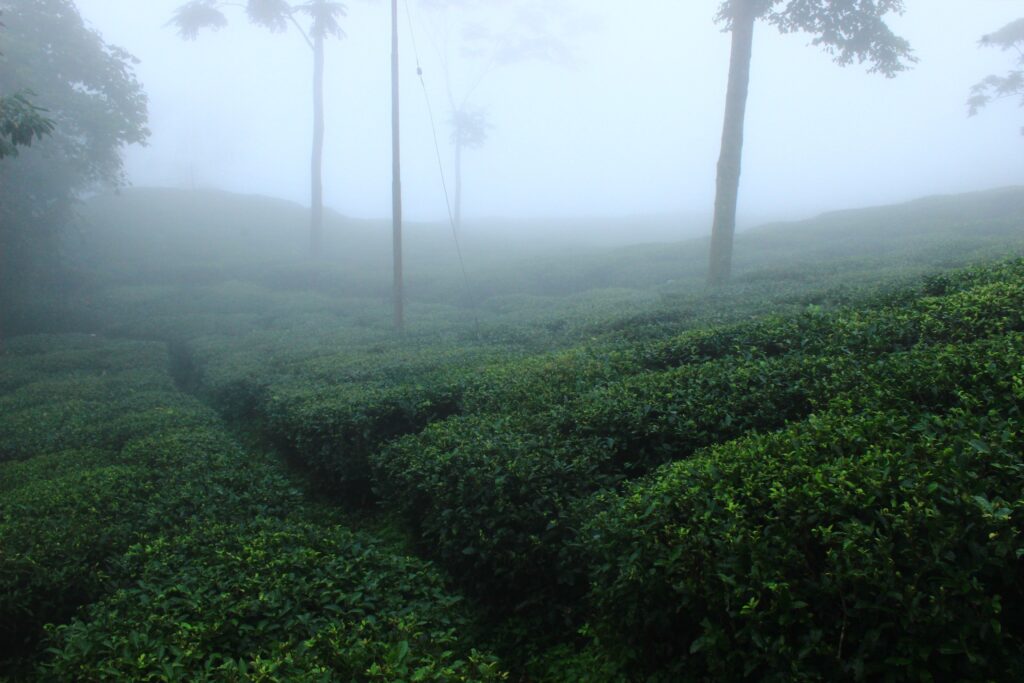
“The best-quality second flush lasts barely a month, from mid-May to mid-June,” says Kanoria. “Though you get decent quality ’til the end of June, it starts declining once you get the full onset of monsoons. So if you have heavy rains from the beginning of May, as was the case in 2023, the second flush is impacted right away.”
Heavy rains coupled with inadequate sunlight leaves tea bushes struggling to grow, producing tea stripped of Darjeeling’s renowned muscatel, or aromatic white grape, flavor. According to Jeff Koehler, author of one of the most comprehensive books on Darjeeling tea, that flavor can only be found in second-flush teas.
While the monsoon flush has not seen much change, abnormally high temperatures in the latter half of the year have dampened the quality of the autumn harvest. “Normally, warmer temperatures and moderate sunlight after the monsoon give a lot of body and aroma to autumn-flush teas, but if it’s too hot, leaves become overgrown and banji once again,” says Modha.
Worsening the Impact of Climate Change
The impacts of changing weather patterns extend far beyond a single season’s harvest. Incessant rains, often accompanied by landslides, wash away the topsoil with all its nutrients, affecting the quality of soil and the health of tea bushes over the long term. One estimate suggests that Darjeeling’s tea estates have lost more than 30 centimeters of fertile topsoil in recent years. Poor soil quality is, in turn, bad news for the productivity of Darjeeling’s mature tea bushes, many of which are more than a century old.
Even as planters struggle to coax decent yields out of aging plants, labor shortages exacerbate the adverse impacts of climate change on cup quality. With many tea garden workers paid abysmal wages of roughly $2 a day for eight hours of intensive and skilled work, often under harsh conditions, it is no surprise that labor absenteeism is on the rise. Some estates put the rate of absenteeism at as high as 40%. This affects the pruning, weeding, and plucking of tea leaves, all of which are still done by hand in Darjeeling, as the hilly terrain makes mechanization difficult.
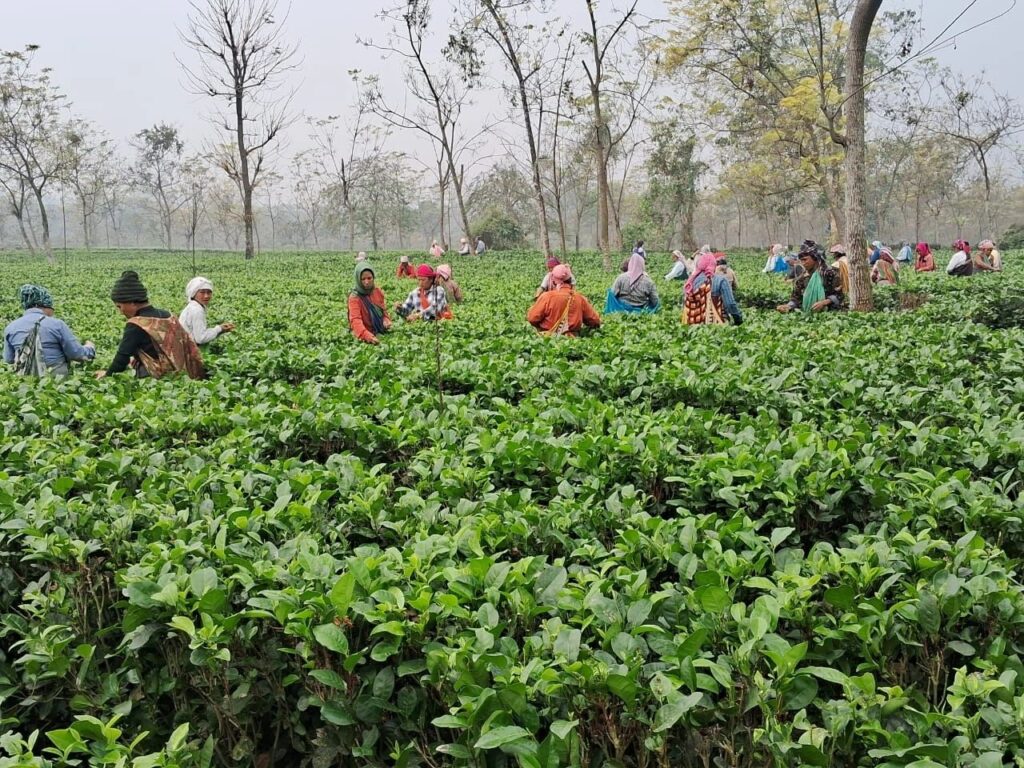
During the first flush, Modha points out, tea bushes need to be plucked every four to five days to get the best-quality leaves. “But due to labour shortages, most gardens are able to maintain this plucking interval in only a few sections while the rest of the bushes are plucked every seven or eight days,” he says. Leaves that have grown beyond the prescribed plucking interval produce tea with a less delicate flavor.
Darjeeling’s planters are also grappling with the loss of export markets, competition from cheap tea produced in neighboring Nepal, and decades of political turbulence. Together, these factors have led to the closure of many tea gardens after years of declining profitability and mounting losses. Others are up for sale. “Of the 87 gardens that [have] survive[d], 18 or 20 have already changed hands in the last two years. Another 40–50 gardens would be up for sale if there were serious buyers,” Kanoria says.
Earlier this year, Kanoria himself sold a garden he had owned for more than two decades. “I can see the writing on the wall and it was very bleak. So when I found an exit opportunity, I was ready to take it,” he says. For now, his Goomtee estate remains commercially profitable. “And as long as I can bear the bleed, I will stay the course.”



